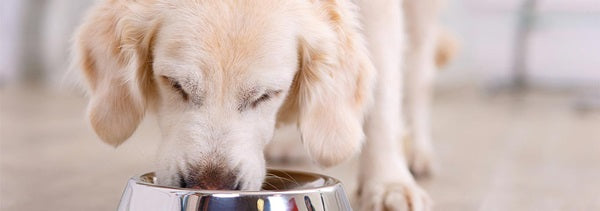
Just like any other animal in the animal kingdom, dogs require a balanced diet. Although domesticated dogs are largely carnivorous, some may even consume omnivorous foods. It is imperative that you tailor your dog's diet according to its medical condition (if present) and the stage of its life.
It is ok to feed your dog a pure kibble diet or a purely raw meat diet. However if deciding to feed raw meats to your fluffy friend it's important to choose human grade meat. Think of it this way, if you wouldn’t like to eat it, why would your dog?. It is also recommended that you practice exceptional food hygiene as poor hygiene may lead to bacterial infections such as campylobacter and salmonella for both you and your dog. To be 100% sure that your dog is getting the food they deserve, I suggest getting a veterinary nutritionist creating a specific diet plan. Bones are also ok for your dog just as long as you limit them to about two a week. This is enough to keep your dogs oral hygiene up to scratch. Make sure that the bone is raw as a boiled bone may fracture, leaving your dog to ingest the splinters causing internal damage or even death.
If you do decide to stick to a pure kibble diet, I recommend the Savour Life Kangaroo flavour. I absolutely love this brand of dog food as 50% of their profits go to saving rescue dogs. I also recommend the Black Hawk grain free chicken.

How much food your dog consumes is heavily reliant on their body shape, breed and lifestyle. If your dog runs a lot and does a lot of physically strenuous activities like a cattle dog, it would require a lot more food than a Pomeranian that stays at home for most of the day. When understanding what a healthy dog should look like it is more important to look at a dog's shape rather than their weight per se. You should be able to see if your dog is underweight or overweight by the visibility of its ribcage. The rib cage should be able to be felt through a slight fat cover.
A dog’s diet also relies on its age as 8 to 16 week old dogs only require commercial puppy kibble. You are definitely able to add cooked meats and veggies but it's best that your brand new puppy eats from a kibble-predominate menu. It is best to feed your puppy small meals regularly. From 16 weeks onwards, feel free to introduce raw bones to your dog's diet. This is the time period where your dog’s adult teeth are erupting so a raw bone will help any teeth issues that may arise. I would also suggest that you do not let your children go near the puppy whilst its eating at this stage of its development. Adult dogs should only be fed once or twice a day. Commercial grade adult food is sufficient. Something that I got a little confused with was the classification of an adult dog. Smaller dogs like your Pomeranian, Beagle or Border Terrier tend to be classified as adults from 12 months of age whether bigger dogs like your Labrador or German Shepherd are classified as adults from 18-24 months. To be sure, check with your vet before switching from puppy food to adult food. Finally, senior dogs may need more fibre, protein or other nutrients in their diet. It is crucial to be aware of our senior dog’s needs and get a tailor fitted diet from your vet.

I know you probably know this but to finish up here are some dos and don’ts when it comes to feeding your dog. Foods to avoid at all costs include: chocolate, onions and garlic, citrus, raw yeast dough, fatty foods and for some dogs milk and lactose. Although salty foods are an integral part of muscle function in dogs, if your dog suffers from kidney or liver problems it is best to avoid them too.
